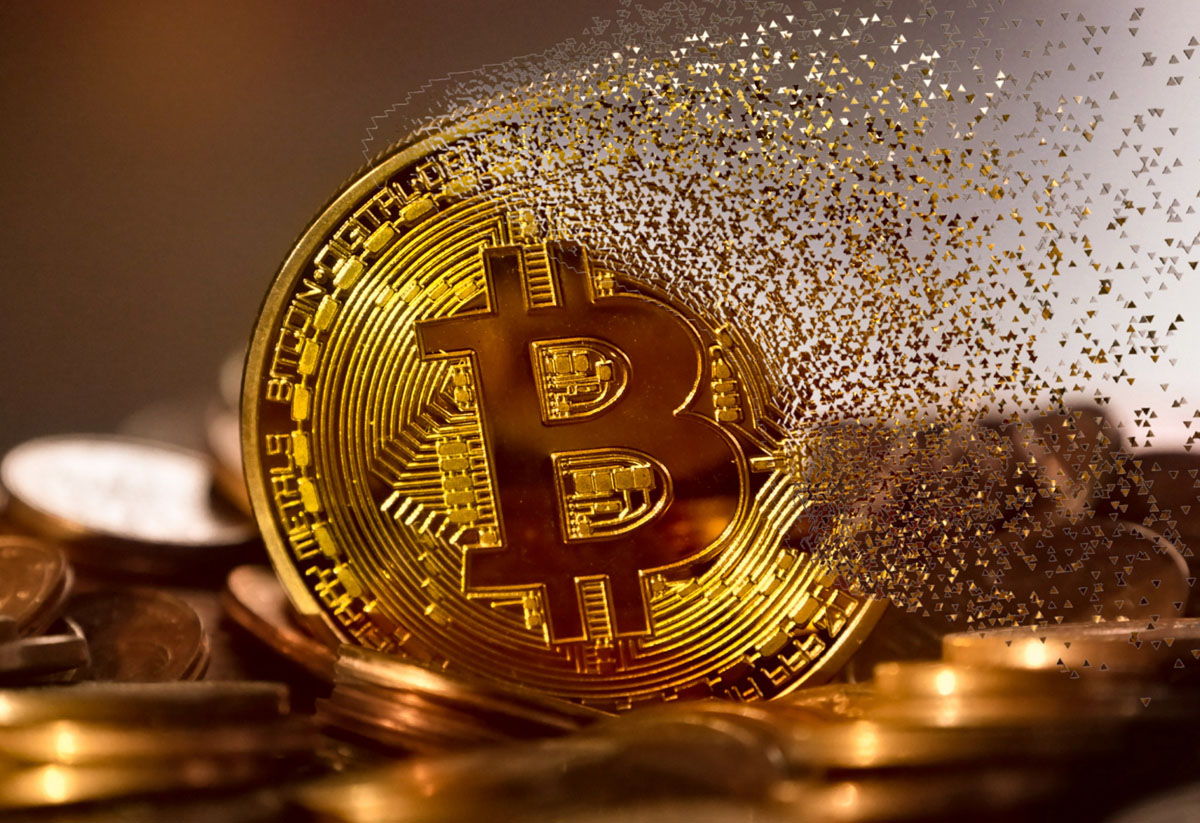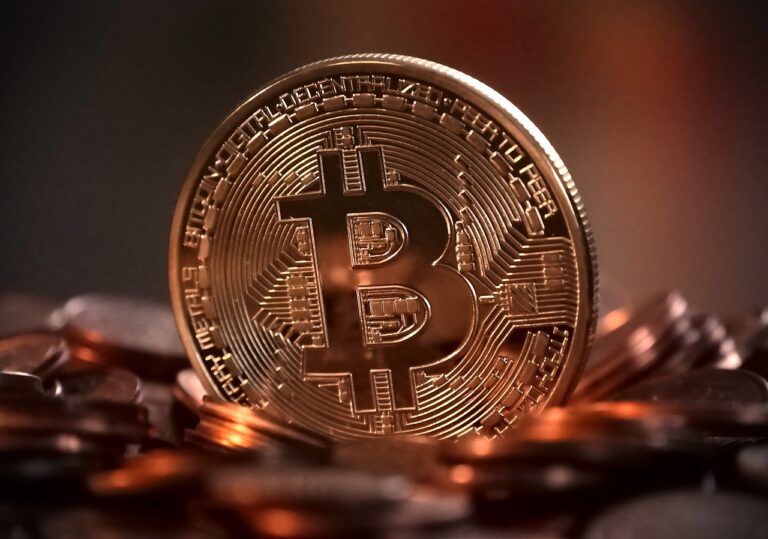Note: As a general rule, when writing about Bitcoin, it’s presumed that using an uppercase “B” refers to the payment network or underlying protocol of Bitcoin. A lowercase “b” refers to the unit of currency and references sending bitcoin payments or accepting bitcoin as payment. And finally, using the term “BTC” refers to the trading symbol used in financial markets and bitcoin exchanges.
Bitcoin is often discussed in relation to its price against fiat currencies like the U.S. dollar. Financial news outlets typically cite the latest bitcoin valuation in dollars when reporting on the cryptocurrency. However, as bitcoin gains wider adoption as an emerging global currency, it’s likely that goods and services could someday be priced directly in bitcoin (BTC) without conversion to dollars.
If you’re interested in learning some entertaining intriguing trivia and facts about Bitcoin, you’ve come to the right place. Bitcoin may seem complicated on the surface, but it’s built on some fascinatingly simple ideas. Dig deeper into the world’s most popular cryptocurrency with these 21 fun facts about Bitcoin that shed light on how it works and came to be.
#1 – Bitcoin was invented by a mysterious figure named Satoshi Nakamoto in 2008.
But no one knows who Satoshi Nakamoto really is. Many theories exist about the true identity of Bitcoin’s creator. However, Nakamoto has never revealed himself. This mysterious founder disappeared in 2011 after turning control of Bitcoin over to other developers.
Nakamoto has not been heard from since 2011, adding an extra layer of intrigue to the identity of the person or group behind the creation of Bitcoin. Despite many efforts to uncover Nakamoto’s true identity, it remains one of the great mysteries of the cryptocurrency age.

#2 – Early Bitcoin investors paid just pennies per coin.
In the early days after its 2009 launch, bitcoins had little value and changed hands for less than a dollar. In 2010, someone bought two pizzas for 10,000 bitcoins in the sole attempt to show that bitcoin can be used as a viable digital currency. At today’s prices, those are very expensive pizzas!
As the popularity of bitcoin grew, the price has risen dramatically. It’s amazing to think that in the early years of Bitcoin, coins could be purchased for just a fraction of a dollar. Now, after over a decade of rising adoption and awareness, a single bitcoin is valued at tens of thousands of dollars, making those early coins acquired for cents look unbelievably inexpensive in hindsight.
#3 – There will only ever be 21 million bitcoins.
Here’s another entry into the “fun facts about Bitcoin” list: Bitcoin is designed to be scarce. New bitcoins enter circulation through mining, but there is a fixed cap of 21 million bitcoins that can ever exist. This ensures bitcoin stays scarce and valuable.
As of 2023, over 19 million BTC have been mined so far. Once 21 million exist, that’s it! The 21 million cap is hard coded into Bitcoin’s protocol and maintaining this scarcity is crucial to Bitcoin’s value proposition. With it, Bitcoin stands in contrast to fiat currencies which can be printed without limit, massively devalued, and used as surveillance tools.
#4 – Bitcoin transactions are anonymous.
Your name and personal info are not tied to your bitcoin holdings or payments. Owners are identified only by an alphanumeric address. Bitcoin does not store any personal details like credit cards do. This anonymity is part of its appeal for some users.
However, bitcoin addresses can sometimes get linked to identities. While totally anonymous at a protocol level, Bitcoin transactions can sometimes be traced back to individuals through analysis techniques, especially when converted to traditional currency and when you use exchanges like Coinbase or Binance. Still, the pseudonymous nature of Bitcoin offers more privacy than traditional bank accounts.
#5 – Fun facts about Bitcoin: Satoshi Nakamoto is one of the richest people alive from Bitcoin.
Even though his true identity remains unknown to this day, Satoshi Nakamoto is estimated to hold over 1 million BTC that he mined by creating the first blocks on the Bitcoin blockchain back in 2009. At current bitcoin prices of around $20,000, this massive early stake puts Nakamoto’s net worth north of $20 billion! Not a bad reward for inventing Bitcoin.
However, none of these coins that Nakamoto mined in the earliest days of Bitcoin have ever been spent or moved from his original wallets, adding further mystery and intrigue to the enigmatic founder’s story. Many wonder what would happen if Nakamoto’s billion-dollar bitcoin cache was ever to get transacted or sold someday. But for now, his original blocks remain untouched.
#6 – Bitcoin cannot be hacked or counterfeited.
Thanks to blockchain technology, every Bitcoin transaction is secured using cryptography. There is no central bank or server to attack. Hacking the blockchain to steal coins or make fakes would take near-impossible computing power – also known as a “51% attack.” This exceptional security is what makes it attractive for transactions.
Bitcoin’s decentralized and cryptographically secured blockchain offers protection against counterfeiting, hacking, and manipulation that exceeds anything possible in traditional finance. This appeals greatly to users seeking an inflation-resistant asset.

#7 – Bitcoin miners verify transactions around the world.
In exchange for validating bitcoin payments and adding transaction records to the blockchain, Bitcoin miners receive small rewards paid out in newly created coins. They use specialized high-powered computers to solve complex but simple cryptographic math puzzles. As long as there are unconfirmed transactions waiting in the mempool to verify, miners can continue earning these block rewards indefinitely.
However, the bitcoin protocol halves these coin rewards every 210,000 blocks, or about every 4 years. This regular reduction in block subsidies, called a halving or “halvening”, predictably decreases the supply rate over time. Even with the halvings shrinking their block rewards, as long as transactions need confirming, miners can keep earning freshly minted bitcoin.
#8 – Over 100 million people worldwide own cryptocurrencies.
Despite high volatility, Bitcoin and cryptocurrency adoption has grown steadily. An estimated 106 million people globally hold some form of cryptocurrency as of 2021. Bitcoin remains the most popular choice as the first and largest coin.
While still a small fraction of the global population, the 100 million estimated cryptocurrency users show that the appeal of digital assets continues to grow. With increased adoption, knowledge, and acceptance, cryptocurrencies like bitcoin may play a much larger financial role in the future.
#9 – El Salvador adopted bitcoin as legal tender in 2021.
In a historic and unprecedented move, El Salvador passed a law in 2021 granting bitcoin status as legal currency alongside the U.S. dollar in the country. This law means businesses, services, goods, and even taxes can be paid in bitcoin.
To facilitate adoption, El Salvador’s government partnered with the digital wallet company Strike to power Bitcoin transactions on a nationwide scale. This marks the first time any sovereign nation has adopted a cryptocurrency as an official currency recognized by law. The bitcoin legal tender law cements El Salvador’s stance as the most crypto-forward country in the world.
#10 – The FBI took down the Silk Road bitcoin marketplace.
The website Silk Road operated on the dark web as an underground online bitcoin marketplace for illegal items like drugs, hacking services, and fake IDs. When the site was shut down by the FBI in 2013, the federal agents seized over 170,000 bitcoins that belonged to Silk Road, worth over $4 billion today!
Silk Road’s founder, Ross Ulbricht, was arrested and sentenced to double life in prison plus forty years with no chance of parole. For a period, the FBI’s bitcoin haul from Silk Road made the agency one of the largest bitcoin owners in the world. The Silk Road saga put Bitcoin on the map but also cemented its reputation as a currency for criminals.

Read on for more fun, interesting facts about Bitcoin and cryptocurrencies.
#11 – The first real-world bitcoin transaction was for pizza.
In 2010, a man named Laszlo Hanyecz paid 10,000 BTC for two Papa John’s pizzas. This transaction was done in public to prove that yes, you can use bitcoins to transact commerce over the internet securely and cheaply. At the time, those 10,000 bitcoins were worth about $30. Those same coins today would be worth over $200 million! This real-world transaction helped demonstrate bitcoin’s use as a currency.
This transaction is so embedded into the lore of Bitcoin that there’s even an unofficial holiday called Bitcoin Pizza Day which falls on May 22nd of each year, commemorating this legendary day.

#12 – More facts about Bitcoin: Bitcoin’s blockchain size is over 400 GB.
The Bitcoin blockchain ledger containing the record of every transaction takes up a huge amount of data storage. As of 2023, the Bitcoin blockchain has grown to over 400 gigabytes. With an average of 1 MB added per hour, the ledger grows larger by the day as new transactions get verified.
Anyone can join the Bitcoin network by downloading the Bitcoin software and verifying a copy of the Bitcoin blockchain. This is regarded as noble and necessary to ensure that the distributed peer-to-peer platform remains open and secure.
#13 – The average bitcoin transaction fee is around $2.
To help confirm their bitcoin payment transactions quickly and reliably, senders can attach a small transaction fee as an incentive for miners to prioritize their transaction into the next block. The average transaction fee on the Bitcoin network dynamically changes based on congestion levels and demand for limited space in blocks, but has sat around $2 as of early 2023.
During peak demand in late 2017 when bitcoin prices and hype were at all-time highs, average fees briefly spiked over $60. Even at their peak, Bitcoin transaction fees remain much lower than those charged by traditional financial services and payment networks like credit cards or wire transfers, which can cost percentages of the total transaction amount versus Bitcoin’s low flat fees regardless of payment size. The ability to send large or small amounts for the same fee is a key advantage of the Bitcoin network.

#14 – The lightning network aims to reduce fees to near-zero cost.
The lightning network is a secondary layer that sits on top of the Bitcoin blockchain, enabling fast peer-to-peer transactions off-chain. It uses payment channels between users that allow many transactions to occur instantly at nearly zero cost without recording each one on the blockchain.
Only the opening and closing balances are recorded on-chain. This scaling solution greatly expands Bitcoin’s capacity for cheap, instant micro-transactions. The lightning network will be key for enabling wider bitcoin adoption for day-to-day spending.
#15 – Over 89% of all bitcoins are in currently in circulation.
Let’s dive into more facts about Bitcoin: out of a maximum supply of 21 million BTC that can ever exist, about 81%, or 18.8 million bitcoins, have been mined and put into public circulation. The remaining amount is released slowly over time through miner block rewards.
The bitcoin protocol dictates that every 210,000 blocks solved, which happens about every 4 years, the number of new bitcoins issued as mining rewards gets cut in half. This gradual reduction, called a bitcoin halving or halvening, slows the release rate over time as the 21 million BTC cap is approached. Currently, miners receive 6.25 BTC per block.
#16 – The largest bitcoin transaction was worth $4.6 billion.
A historic record was set in late 2022 when a single bitcoin transaction worth $4.6 billion took place, marking the largest amount of value ever sent over the Bitcoin network in one transfer.
While the parties involved were anonymous, the transfer was likely an exchange or institution simply moving bitcoin funds between cold storage wallets. Regardless, it serves as an impressive example of Bitcoin’s capability to instantly move incredible sums of money and value quickly, securely, and without reliance on any third party.

#17 – Only 3% of Americans own bitcoin.
Though interest and general awareness of cryptocurrencies have expanded considerably in recent years, actual adoption of Bitcoin specifically remains relatively limited on a percentage basis, with only about 3% of Americans surveyed reporting they own any bitcoin as of 2022. That likely represents somewhere around 10 million people that own bitcoin among the broader U.S. population.
This low but growing percentage signals there is still enormous untapped potential for wider mainstream Bitcoin adoption in the future. If current trends continue, Bitcoin ownership could easily move above 5-10% of Americans in the coming decade as more people learn about and become comfortable with crypto.
#18 – The lucky Genesis block mined 50 bitcoins.
When Satoshi Nakamoto mined the Genesis block on January 3, 2009, introducing Bitcoin to the world for the first time, it generated a special one-time mining reward of 50 BTC. This first-ever block, hard coded into the Bitcoin protocol, represents the very beginning of the blockchain ledger and set the initial bitcoins into circulation when they were minted and awarded to Nakamoto.
As the foundational block, the Genesis block serves an important purpose and cannot be modified or erased. It set the blockchain in motion and contains the text: “The Times 03/Jan/2009 Chancellor on brink of second bailout for banks,” establishing Bitcoin’s origins during the 2008 financial crisis.
#19 – Bitcoin averages 400,000 transactions per day.
The Bitcoin blockchain continues to grow. The Bitcoin network facilitates around 400,000 transactions sent around the world each day on average. On high-volume days, this can reach as many as 2 million daily transactions. While dwarfed by the 150 million transactions Visa handles daily, Bitcoin processes meaningful economic value on-chain each day.
#20 – Bitcoin miners use specialized hardware to mine bitcoin.
Bitcoin mining requires specialized computing hardware called ASICs, or application-specific integrated circuits. ASICs are microchips designed for the sole purpose of mining bitcoin blocks. Unlike GPUs or regular CPUs, ASICs can calculate trillions of hashes per second making them the only profitable way to mine bitcoin today.
ASIC mining hardware has turned bitcoin mining into a competitive, expensive industry requiring massive computing power. Luckily, every day more power for bitcoin mining comes from renewable energy sources like solar and hydro power.

#21 – A Norwegian accidentally tossed $100 million in bitcoin.
In one of the most painful losses in Bitcoin’s history, a Norwegian man mined 7,500 bitcoins in the early days when they had little value, only to accidentally throw away the keys to access them in the trash. Years later, that dumped wallet worth nearly nothing had ballooned to a heartbreaking $100 million fortune. Despite a landfill search, the bitcoins seem lost for good, serving as a costly reminder to always keep backup keys.
Fun facts about Bitcoin: Wrap-up
With anonymous origins and an association with mystery, Bitcoin captures the imagination, unlike any existing currency. Yet at the same time, it represents major innovation that could transform finance through decentralized digital money and blockchain technology. Only time will tell whether Bitcoin’s importance will grow. But one thing is for sure – Bitcoin is here to stay, and its story is far from over!


